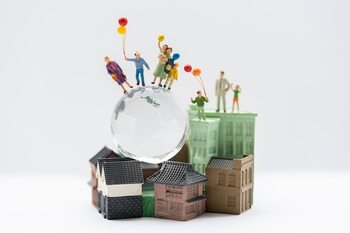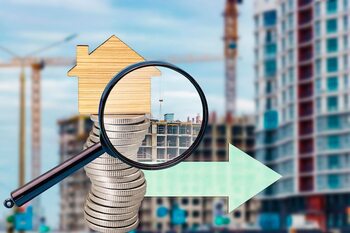The essence of the environment in property valuation

The location of a property is one of the most determining factors in its valuation, and the environment plays a crucial role in this dynamic. In Costa Rica, the dichotomy between rural and urban becomes a fascinating aspect that deserves exploration. While cities offer modernity and access to services, the countryside provides tranquility and a connection with nature. Discover how these differences impact not only property prices but also the quality of life of their inhabitants.
The influence of the natural environment on rural surplus value.
The influence of the natural environment on rural added value is a phenomenon that has been increasingly recognized in the real estate sector. In regions where nature dominates the landscape, such as mountains, rivers, or forests, properties tend to acquire significant added value. Scenic beauty and the opportunity to enjoy outdoor activities are attractions that not only raise the price of rural properties but also enrich the living experience of those who choose to reside in these environments. Additionally, proximity to protected areas or national parks can be a decisive factor for many families and environmentally conscious buyers.
Another relevant aspect is how the natural environment affects the perception of well-being and quality of life. Properties located in rural areas often offer a more relaxed lifestyle, away from urban noise, which is appealing to those looking to escape everyday stress. This connection with nature not only promotes better mental and physical health but also fosters a sense of community among residents. As more people value these characteristics, the interest in investing in rural real estate grows, thereby driving up its value and further highlighting the importance of the natural environment in the real estate market.
2. Accessibility and services: What does the urban environment offer?
Accessibility and the services available in an urban environment are determining factors that influence real estate valuation. Cities typically offer a wide range of essential services, such as hospitals, schools, shopping centers, and efficient public transportation. This infrastructure not only facilitates the daily lives of residents but also attracts potential buyers and investors seeking convenience and comfort. In this sense, a property located near these services tends to have a higher value, as it is perceived as a secure investment in an area where demand is constant.
In addition to the availability of basic services, the urban environment can offer cultural and recreational opportunities that enhance quality of life. Museums, theaters, parks, and community spaces are elements that contribute to the appeal of a specific location. Therefore, properties located in areas with access to these amenities not only achieve a higher valuation in economic terms but also promote an active and vibrant lifestyle for their inhabitants. In summary, the combination of accessibility and variety of services transforms the urban environment into a key factor for assessing and understanding the real value of a property.
3. Buying trends: Rural or urban? What buyers are looking for
In the search for properties, buyers are increasingly influenced by their lifestyles and personal preferences, leading to a clear trend toward choosing between rural and urban environments. While urban areas continue to attract those who value the convenience of access to services, transportation, and job opportunities, many are discovering the charms of rural life. Peace, fresh air, and proximity to nature are characteristics that entice those looking to escape the urban hustle. This shift in buyers' priorities highlights a growing desire for a balance between work and personal well-being.
Purchasing decisions also reflect broader concerns, such as sustainability and the desire to live in more connected communities. In urban areas, there is a growing demand for properties that incorporate ecological solutions and shared spaces that foster a sense of community. On the other hand, in rural areas, buyers value aspects such as self-sufficiency and access to land for cultivation or personal project development. This duality not only affects property prices but also redefines what it means to have quality of life in a context where more and more people seek to make their home a refuge aligned with their values and interests.
4. The impact of urban development on nearby rural areas
Urban development has generated a ripple effect that extends beyond the borders of cities, directly affecting the adjacent rural areas. As urban centers grow and expand, the demand for land and properties in their surroundings increases, raising prices in these nearby areas. This phenomenon can lead to a significant appreciation of rural properties, making them attractive options for those seeking to combine the tranquility of the countryside with access to urban services. Thus, investing in these areas can be seen as an opportunity for both buyers and developers. However, the impact of urban development is not always positive. The transformation of rural areas due to urbanization can bring challenges such as the loss of green spaces and the alteration of local ecosystems. Additionally, the increase in population in these areas can exert pressure on natural resources and affect the quality of life of their residents. Therefore, it is crucial to consider how these changes influence not only the economic value of properties but also the social and environmental well-being of nearby rural communities. The essence of the environment thus manifests not only in monetary terms but also in the quality of the space where we live.
5. Lifestyles: How the environment affects our housing choice
The lifestyle of individuals is intrinsically linked to the environment in which they choose to live. Urban areas, with their constant hustle and proximity to services such as restaurants, shops, and entertainment centers, attract those who value convenience and social activity. In contrast, many seek refuge in rural settings, where peace and serenity become a priority. This choice not only affects the type of property acquired but also influences fundamental aspects such as emotional well-being and health. Urban life can offer unparalleled job and social opportunities, but it can also come with the stress and congestion typical of large cities.
On the other hand, living in a rural environment provides a deeper connection with nature, which is essential for those who prioritize a more sustainable and healthy lifestyle. The choice between urban and rural goes beyond simple aesthetic desire; it reflects personal values about how we want to interact with our daily environment. Properties located near natural parks or green areas often have a special appeal for those seeking that balance between quality of life and contact with the environment. Thus, the influence of the environment not only determines real estate prices but also plays a decisive role in how we perceive our quality of life in each of these contexts.
6. Sustainable projects: A new perspective on rural valorization
The valuation of real estate in rural areas is undergoing a significant transformation thanks to sustainable projects that aim to recover and enhance the value of these areas. The implementation of eco-friendly practices, such as organic farming and construction with local materials, not only improves the quality of the environment but also attracts a new profile of buyers interested in living in harmony with nature. These projects not only benefit the environment but also generate economic opportunities for local communities, creating a virtuous circle that increases property values while preserving cultural and natural heritage.
Furthermore, sustainable projects encourage a new perspective on rural valuation by highlighting aspects such as biodiversity and responsible resource use. Initiatives like eco-villages or sustainable tourism destinations have demonstrated that it is possible to combine economic development with environmental conservation. By integrating green spaces and promoting healthy lifestyles, an additional appeal is created for those looking to escape urban noise without giving up modern comforts. This holistic approach not only enhances real estate value but also contributes to improving the quality of life for its residents, making the rural environment an increasingly desirable option.
7. Price comparison: Analysis between rural and urban properties
The price comparison between rural and urban properties in Costa Rica reveals a wide spectrum of possibilities that reflect the preferences and needs of buyers. In urban areas, prices tend to be significantly higher due to the constant demand for proximity to essential services such as schools, hospitals, and shopping centers. Properties in cities like San José or Alajuela are not only valued for their strategic location but also for the amenities they offer. This urban phenomenon attracts professionals and families who prioritize quick access to infrastructure and job opportunities, which translates into a higher initial investment.
On the other hand, rural properties present a different appeal: more accessible prices that allow many to acquire larger properties or those with extensive land. The tranquility of the countryside, along with the connection to nature, are factors increasingly valued in a society seeking to escape urban noise. Although the prices of these properties are often lower, the growth potential is also notable, especially in regions where ecotourism or sustainable agriculture are on the rise. This dichotomy not only establishes evident economic differences but also poses a dilemma about which lifestyle is preferred: urban dynamism versus rural serenity.
8. Future of the real estate market: Where are preferences heading?
The future of the real estate market presents itself as a constantly evolving landscape, where buyers' preferences are being shaped by various social and economic factors. Increasingly, the interest in spaces that offer quality of life has intensified, driving demand towards properties located in environments that combine the urban with the natural. This phenomenon highlights the search for a balance between modernity and tranquility, where buyers value not only proximity to essential services but also access to green areas and recreational spaces that promote a healthy lifestyle.
Moreover, the rise of remote work has transformed the traditional dynamics of the real estate market, allowing many professionals to choose residences in rural or semi-urban areas without sacrificing their jobs. This trend has led to a resurgence of interest in properties outside major cities, where prices are more affordable and the quality of life seems to improve significantly. In this context, it is essential for both builders and real estate agents to understand these new preferences in order to adapt and offer solutions that highlight not only the geographical location of the property but also the surrounding environment and how it influences the daily experience of its future inhabitants.



